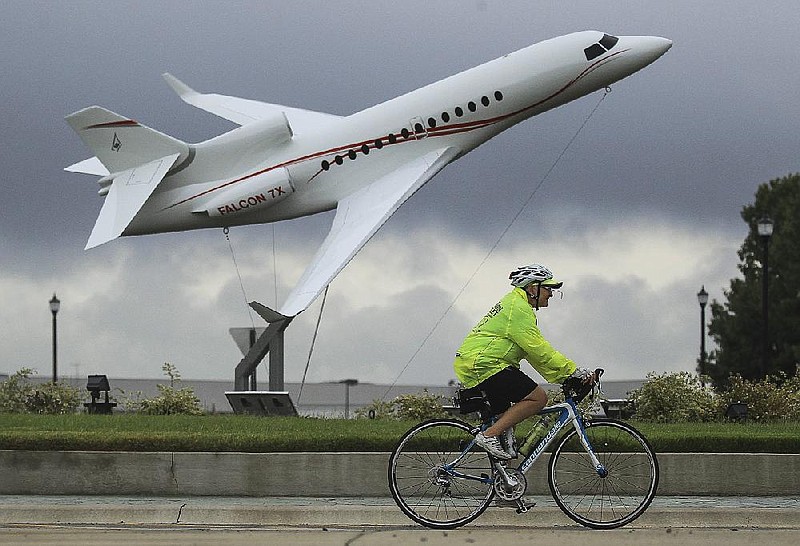A proposal to place part of the Southeast Trail in Little Rock onto parts of a levee and drainage system is in the design stage, the chairman of the Little Rock Pulaski County Drainage District No. 2 said Tuesday.
The 13-mile bicycle and pedestrian trail spur linking the Arkansas River Trail in downtown Little Rock with David D. Terry Lock and Dam was dedicated almost six years ago.
It now begins at the Clinton Presidential Center, going east and south as it follows Bond Avenue, then out East Sixth and Ninth streets around the north end of Bill and Hillary Clinton National Airport/Adams Field before heading onto East Roosevelt Road, Fourche Dam Pike and through part of the Little Rock Port. It ends at the Dam Site 6 West Park at the lock and dam.
"The goal is to place as much as the reconfigured trail on existing levees along the Arkansas River," Larry Alman, the drainage district chairman, told the Little Rock Municipal Airport Commission at its monthly meeting Tuesday.
Alman was providing an annual update on the drainage district under the terms of a memorandum of understanding between the drainage district and the airport reached in 2018 after which the state's largest airport began making payments to help subsidize the operation and maintenance of the system.
The district levies a fee on landowners' property tax assessments and that revenue pays for operation and maintenance. The three-person board, composed of property owners appointed by the Pulaski County judge, hires engineers from the city to run and maintain the system, as well as an auditor to review its finances.
The 8-mile levee and drainage system, which includes four pump stations and 14 drainage structures, protects a 2,500-acre tract in east Little Rock from the Arkansas River, an area that includes the airport and the 95 businesses within its boundaries.
Of the 929 parcels in the district, 361 are owned by businesses and 568 parcels are owned by homeowners, according to Alman.
The levee and drainage system, authorized by the U.S. Army Corps of Engineers, was completed in 1947.
The commission approved another payment totaling nearly $80,000. Under a similar arrangement reached at the same time, the Little Rock Water Reclamation Commission pays about $22,000 annually to the drainage district. It has a major water treatment plant bordering the airport.
Work that began in June to upgrade the pumps is about 75% complete. The work is being paid from the proceeds of a $350,000 state grant.
The upgrades include electrical improvements to the breaker panels, control panels, generator switch disconnects, pump switches and interior and exterior lighting, according to Alman.
Until 2018, the airport hadn't made any financial contribution to the district. While it maintained it had no legal requirement to pay the assessments and that such payments would violate its agreements with the Federal Aviation Administration, the airport said it would find a way to help the district.
The airport as well as the Water Reclamation Commission account for about half the parcels in the district. As a result, levee district officials and its lawyers say it has struggled over the past several years to generate enough money to maintain the levee, pumps and drainage structures.
In 2018, the FAA concluded payments could be made if the airport could show it directly benefited from the levee district. The FAA also decreed the payments could only be made on a "going forward" basis beginning Jan. 1, 2018, and the methodology used to determine the payments must be nondiscriminatory and identical to that being used to charge other ratepayers.
Airport officials came up with the $77,901 figure to pay the levee district. It is based on the insured value of airport property as of September 2017 -- reasoning that flood insurance is available to the airport because the levee that protects the airport is federally certified -- and the improvement district's fee of 2.3 mills.
